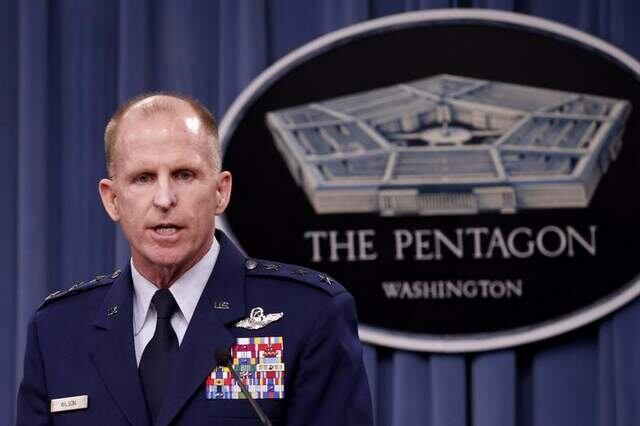WASHINGTON — Big changes to the Air Force’s electronic warfare capabilities may be coming in 2019.
The service’s yearlong EW study is drawing to a close, with a final report expected in mid-January, Gen. Stephen Wilson, the Air Force’s vice chief of staff, told reporters Wednesday.
“We’re about two months away from having the results of that,” he said.
RELATED

Wilson announced the EW study in late 2017. Then, Brig. Gen. David Gaedecke, the Air Force’s director of cyberspace operations and warfighting integration, was tapped earlier this year to lead an “enterprise capability collaboration team” that would explore new ways to perform electronic warfare and how to integrate those capabilities across the service.
Gaedecke will brief the results at the Weapons and Tactics Conference held Jan. 16 and 17 at Nellis Air Force Base, Nev., Wilson said. A public report is expected to follow in the months afterward.
While Wilson didn’t preview any of the report’s recommendations, he said that the findings make clear that the Air Force may be falling behind in the sphere of electronic warfare.
“We haven’t been paying attention to what I would call spectrum dominance,” he said.
“Almost everything we do in the military goes through the spectrum when you think about it, across any force. I’ll use an airplane [as an example.] An airplane uses GPS, it uses data links, it uses communications, it uses radars. Its weapons all go through the spectrum. If you don’t dominate the spectrum, you quickly resort to a World War II Army or Navy or Marine Corps or Air Force.”
Although few details about the scope of the study have emerged, a January 2018 request for information stated that it would identify near and long-term capability gaps, from fiscal years 2018 to 2040, with an emphasis on threats that would occur in a highly contested environment.
“Particular areas of interest” include the radio, visible, infrared, ultraviolet and millimeter wave portions of the spectrum, as well as space, cyber and directed energy, the RFI said.
Over the course of the study, the team contacted experts, industry, and the other services for feedback, Wilson said. It also brought in red teams to help isolate vulnerabilities.
The electronic warfare study follows two earlier efforts, known as Enterprise Capability Collaboration Teams, that explored air superiority and multi-domain command and control.
RELATED

While these initiatives usually don’t directly result in funding for new capabilities, they help guide the Air Force’s long-term thinking about a problem, oftentimes informing follow-on studies. In some cases, the findings also prompt experiments such as the “Data to Decision” campaign that looked at using cloud-based technologies to expedite decision-making. This effort was spurred by the Air Superiority 2030 effort.
Valerie Insinna is Defense News' air warfare reporter. She previously worked the Navy/congressional beats for Defense Daily, which followed almost three years as a staff writer for National Defense Magazine. Prior to that, she worked as an editorial assistant for the Tokyo Shimbun’s Washington bureau.








